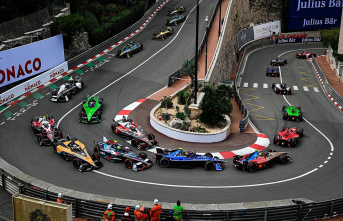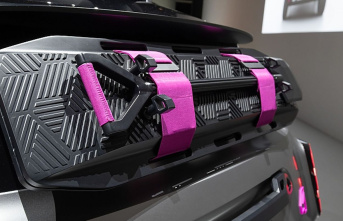Rising energy costs and sales losses due to the slump in consumption are putting stationary retail under further pressure. The German Retail Association (HDE) fears that the number of shops dying out could accelerate in the coming months, especially in the inner cities.
The government's prospect of billions in aid against high energy costs should therefore also benefit retailers. "Otherwise we could experience a disaster in many inner cities," says an HDE spokesman and warns: "If trade dies, the city dies." Especially in times of crisis, it is also important to take countermeasures with investments.
According to a survey recently published by the HDE, 60 percent of consumers are already restricting themselves when shopping, and a good three quarters want to tighten their belts in the coming months. The stationary fashion and clothing trade, which has been weak for years, is likely to be hit again.
For the entire industry, the HDE is preparing for a five percent drop in sales in the second half of the year - compared to the second half of 2021, which was already weak due to the pandemic. "In individual industries, sales are still up to 20 percent below the pre-crisis level 2019," says the spokesman.
All actors must work together
But how can the decline in the inner cities be stopped if retailers have to give up? There are numerous ideas for this, but there is no patent recipe that can be transferred to all municipalities, according to the HDE spokesman. The local conditions - from the historic city center of a small tourist town to a modern city - are too different for that.
In addition: “In the current acute crisis, everything is becoming a bit more difficult. The money pots will certainly not be fuller for the time being.” If the concepts are to work, all stakeholders in the municipalities would have to work together - from the heads of the town hall to city marketing, retail and gastronomy to cultural providers and citizens.
In Hesse, for example, Hanau made a name for itself with the "Hanau aufLADEN" concept. As a core element, it includes a right of first refusal, with which the city secures first access rights to real estate in inner-city locations. This has only been used a few times, says Hanau's Lord Mayor Claus Kaminsky.
"Just that the owners know that there is a right of first refusal statute gives us a chance to talk and to conclude contractual agreements about what will take place there in the future." As an alternative to buying, the city can also rent real estate and sublet it to suitable companies. Other elements are an economic stimulus program to upgrade facades and subsidies for operators of new shops.
New openings despite the crisis
Over time, Hanau wants to establish a mix of owner-managed retail and chain stores, gastronomy, events, markets and new, creative concepts such as pop-up retail and gastronomy. The concept, which was launched before the pandemic, has been well received - despite the crisis, there have been several new openings in the past few days, says Kaminsky.
The city in the east of the Rhine-Main area is also one of 14 German model cities that are developing a digital platform for settlement management in the "City Laboratories for Germany" project. These include, for example, Karlsruhe, Erfurt, Nuremberg, Lübeck and Rostock.
The basis for the platform is a wide range of data, such as companies looking to expand, the current occupation and vacant spaces in the cities, pedestrian frequency and many other topics, says Eva Stüber from the Cologne Institute for Retail Research. Real estate is looking for a dream use - the platform should function like a kind of "Tinder" for inner cities and enable them to be actively designed with holistic approaches.
Creativity is required
Stüber also believes that a stronger mix of living, working, retail, art and culture, gastronomy and encounters is the best recipe against the crisis. The lockdown with months of closures has shown that the inner cities must also have non-commercial areas.
More creativity is needed to maintain lively meeting places - like in Haan in North Rhine-Westphalia, where a holiday playground is transformed into a beach club with beach chairs, artist performances and parties in the summer weeks. Elsewhere, too, new concepts are in the works, for example in Bremen, where a competition for pop-up stores was initiated, or in Nuremberg, where project teams are working on making the city center livelier.
Such initiatives point in the right direction for the German Association of Cities. "Where there is trade, there will not be new trade everywhere," says Verena Göppert, deputy general manager of the association. "That's why we want to mix new and familiar uses in our city centers." Crafts, art, education and housing should come back to the inner cities.
"The cities want to shape the new way of working together and the mix of functions, together with landlords, companies, culture and all other local players." The federal government provided a one-time payment of 250 million euros for model projects. "That was a good start. This has to become a reliable funding program over a longer period of time. Because inner cities remain the heart of urban life," says Göppert.








